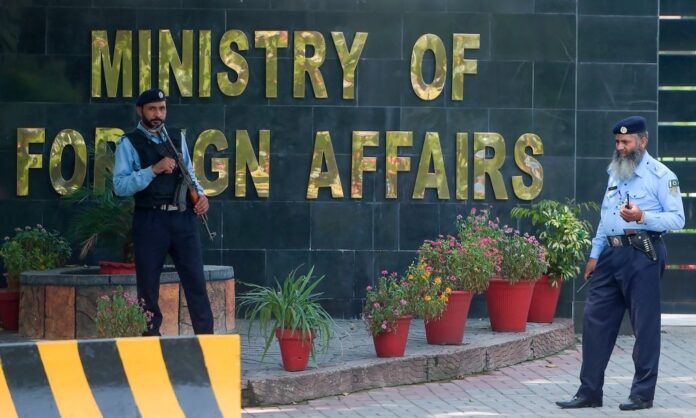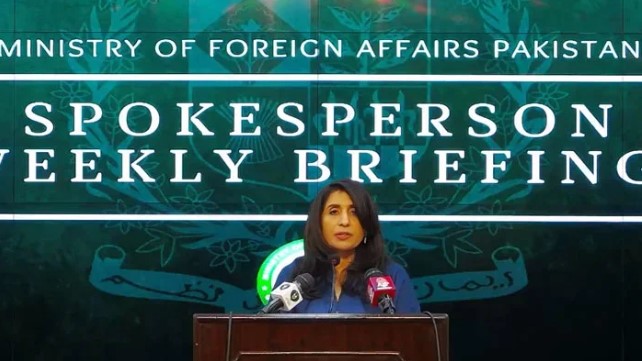
Qaisar Mansoor
Pakistan lies in a region that can easily be regarded as the most complicated and difficult with respect to regional/global geo-politics.
With a 3399 kilometers of Indian border in East, 2640 kilometers border with Afghanistan in West, 600 kilometers border with China, 750 kilometers long border with Iran and 1000 kilometers long coast, Pakistan remains in a cauldron of careful inter-state management. There are over 60 languages spoken in Pakistan.
96.5 percent population is Muslim and other religious minorities include Christian and Hindus (3.5pc). Pakistan has the most beautiful and undiscovered touristic sites with huge untapped tourism potential.
World level sportsmen, economic geniuses, noble winner scientists, doctors, diplomats, artists, maintaining one of the best armed forces, war aces to becoming only Muslim Nuclear armed nation is by no means feats to be brushed away.
According to Global Firepower Index 2022, Pakistan’s military strength stands at 9 out of 142 countries. Pakistan has been also actively contributing to international efforts for strengthening global norms on arms control, non-proliferation and disarmament and follows latest international standards on export controls, nuclear safety and security at the national level.
It is also largest contributor of troops to UN assisting in its mandate of global peace; so far more than 200,000 Pakistani soldiers have participated in 60 missions in 28 countries.
Pakistan has two Nobel laureates, namely Abdus Salam and Malala Yousafzai. In current fiscal year, Pakistan’s IT exports would cross $3 billion mark.
Pakistan has some of the youngest Microsoft certified professionals e.g. Arfa Kareem, Ayab Qureshi, Mehroz Yawa etc. Edhi Foundation is running the world’s largest ambulance network.
Pakistan is a gift of Almighty Allah we all cherish and that’s why patriotism found in this part of the world remains unmatched.
Pakistan is currently one of the youngest countries in the world with 64 percent of population below the age of 30 and 29 percent is between the ages 15-29 years. We need to utilize the maximum potential of our youth.
Pakistan is implementing various initiatives that have tried to address gender-related issues, apart from mitigating climate change impacts. Examples include the following projects:
We have started the Ten Billion Tree Tsunami Programme (TBTPP). This programme provides livelihood opportunities for women in forestry.
It also assists women with raising plant nurseries in rural areas. Importantly, it employs female community mobilization teams of the Forest Department; which would approach those women who are impoverished and destitute, and then educate and train them.
Clean Green Pakistan Movement (CGPM) was re-designed post-COVID to assist with the objectives of job creation, by contributing to total sanitation, solid waste management, and hygiene within identified districts of two provinces (Punjab and Khyber Pakhtunkhwa).
This movement was redesigned to target a total of 53,250 livelihood opportunities over the span of three months.
This would include community and, social mobilizers raising awareness around sanitation and drain cleaning, garbage collectors/scavengers, as well as certified Clean Green Champions.
After the success of the pilot phase, the movement has been scaled up to include Azad Jammu Kashmir and Gilgit Baltistan.
I would also like to mention Glacial Lake Outburst Flood (GLOF) risk reduction in Northern Pakistan which aims at building resilience through Early Warning Systems (EWS), infrastructure, and disaster management policies.
All the above-mentioned adaptation measures are created with the intention of building community resilience by means of enhancing the participation of women.
Besides, with a view to narrowing gender gaps and integrating gender perspectives in all sectoral policies, plans and strategies, the National Climate Change Gender Action Plan (ccGAP) is currently being drafted by the International Union for Conservation of Nature (IUCN) and Pakistan in coordination with the Ministry of Climate Change (MoCC) and other relevant stakeholders.
As already highlighted, to make the updated NDC gender-sensitive, a Gender working group was formulated, which was led by a woman.
This Group would identify the gender gaps in NDC sectors and develop recommendations to close these gaps. The working group participated in various meetings and developed a working paper to inform the NDC about emerging priorities and challenges.
However, women’s participation in the rest of the working groups was low, and in some cases even nil. I also noted that the gender representatives from provincial departments should have further been allowed to improve the recommendations but given the time constraints, the best possible outcome was delivered within the given time frame.
The working groups organized a series of meetings to identify and consolidate Pakistan’s efforts over the last five years and to design recommendations for the next five years.
The groups also identified the capacity, technology, and financial needs for NDC implementation. In addition to these, a few new areas were highlighted which were never a part of Pakistan’s NDC. Pakistan will have its own pavilion at COP26, with side events, for which necessary arrangements have been made.
Could you identify gaps and challenges, with reference to gender considerations in climate resilience in Pakistan?
First and foremost is the inconsistency in the efforts that have been made so far. To sustain inclusive climate-resilient programming and operations, We need policies which necessitate all programs to be gender-sensitive.
We have seen such approaches adopted at different levels in certain NGOs and in the commercial sector.
The development of gender indicators and markers will ensure gender-sensitive public programming.
Secondly, I would like to highlight that the biggest challenge in South Asian countries is the unavailability of sex-disaggregated data.
Countries need to build capacities and human resources at the local level to collect and maintain this data on a regular basis, so as to understand and build evidence on the gendered impacts of climate change and to design climate informed-programs.


